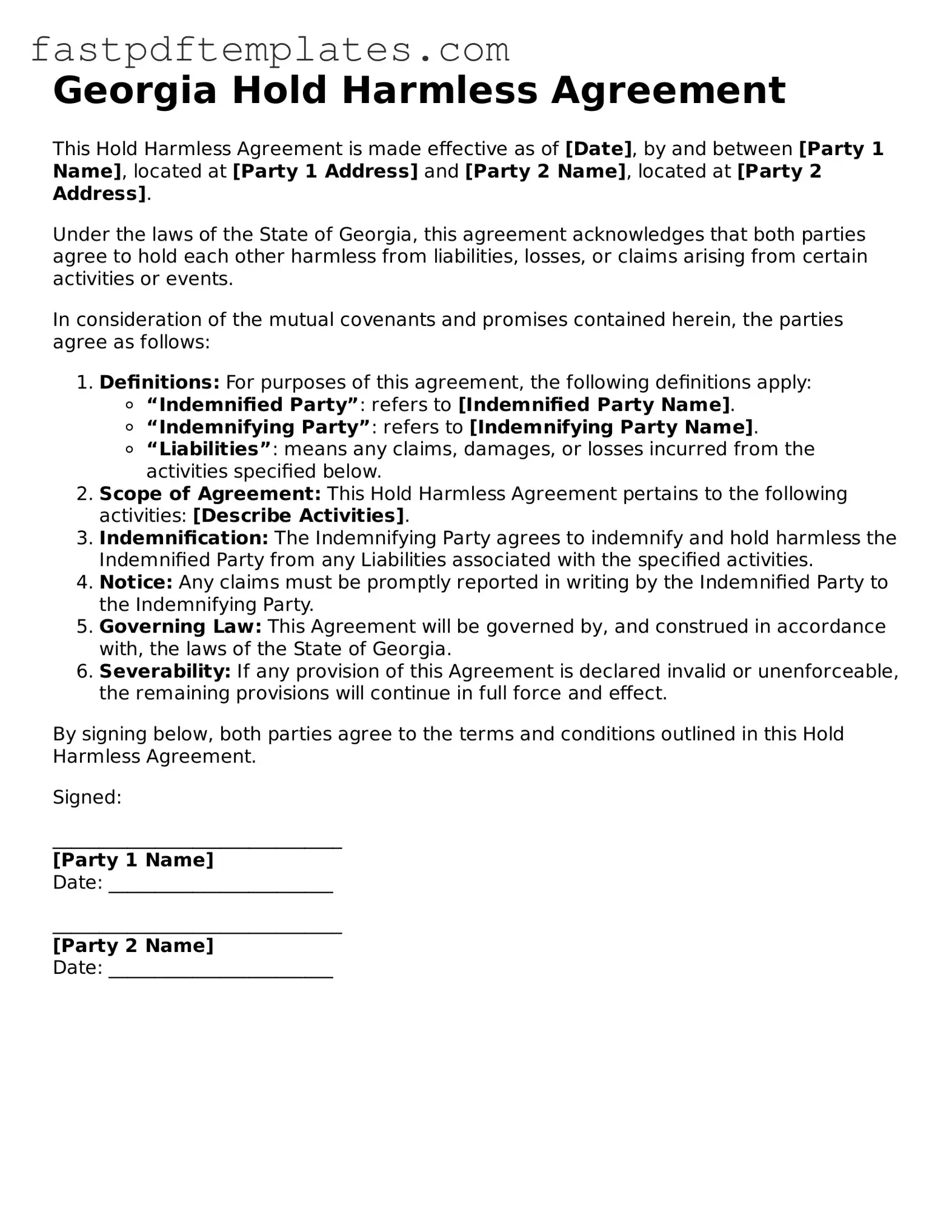Georgia Hold Harmless Agreement
This Hold Harmless Agreement is made effective as of [Date], by and between [Party 1 Name], located at [Party 1 Address] and [Party 2 Name], located at [Party 2 Address].
Under the laws of the State of Georgia, this agreement acknowledges that both parties agree to hold each other harmless from liabilities, losses, or claims arising from certain activities or events.
In consideration of the mutual covenants and promises contained herein, the parties agree as follows:
- Definitions: For purposes of this agreement, the following definitions apply:
- “Indemnified Party”: refers to [Indemnified Party Name].
- “Indemnifying Party”: refers to [Indemnifying Party Name].
- “Liabilities”: means any claims, damages, or losses incurred from the activities specified below.
- Scope of Agreement: This Hold Harmless Agreement pertains to the following activities: [Describe Activities].
- Indemnification: The Indemnifying Party agrees to indemnify and hold harmless the Indemnified Party from any Liabilities associated with the specified activities.
- Notice: Any claims must be promptly reported in writing by the Indemnified Party to the Indemnifying Party.
- Governing Law: This Agreement will be governed by, and construed in accordance with, the laws of the State of Georgia.
- Severability: If any provision of this Agreement is declared invalid or unenforceable, the remaining provisions will continue in full force and effect.
By signing below, both parties agree to the terms and conditions outlined in this Hold Harmless Agreement.
Signed:
_______________________________
[Party 1 Name]
Date: ________________________
_______________________________
[Party 2 Name]
Date: ________________________
